Fingers at the Window

Brief Synopsis
Cast & Crew
Charles Lederer
Lew Ayres
Laraine Day
Basil Rathbone
Walter Kingsford
Miles Mander
Film Details
Technical Specs

Synopsis
A series of apparently unrelated ax murders terrorizes Chicago and baffles the police, leading police psychologist Dr. Cromwell to deduce that the murderers are suffering from "an epidemic" of schizophrenia. Actor Oliver Duffy, whose play has closed because Chicagoans are afraid to go out at night, sees a man wielding an ax following a young woman. He tries to warn the woman, Edwina Brown, but she thinks he is a trying to pick her up. When she is then nearly killed, she realizes that he was telling the truth. After escorting Edwina home and arranging to meet her the following evening for dinner, Oliver sees something suspicious at her window. Unknown to her, he spends the night on her fire escape to make sure she is safe. The next evening, Oliver is waiting inside her apartment and explains that he secretly pocketed her key the night before and fell asleep on her fire escape hoping to catch the intruder he saw at the window. Asking her to trust him, Oliver explains a plan to set a trap for the man. Shortly thereafter, a man wielding an ax breaks in and Oliver stops him. At the police station, Inspector Gallagher questions Edwina as the only live witness they have, but Edwina has no idea why the man wanted to kill her. For her protection, the police rent a suite for her but as they get to the room, Oliver sees that the fire ax is missing and chases a fleeing man to the hotel basement. Although the man escapes, Oliver deduces that it is Edwina, not a random victim who is the target. Although Edwina still cannot fathom that anyone would hate her so much, she admits that something involving a man had happened in Paris a few years before. She tells Oliver it has nothing to do with the ax murders, but he is convinced that she is lying and angrily leaves. While Oliver again secretly spends the night guarding Edwina, the man he was chasing goes to the home of Dr. H. Santelle and is shot. Later, at the police station, Oliver offers his theory to Gallagher that the "voices" that all of the murderers talk about are real, not imaginary. Following a hunch and hoping to earn the $25,000 reward being offered by a newspaper, Oliver goes to a psychiatric clinic and, pretending to be a lunatic, ransacks the files and learns that all of the ax murderers have been patients and all have names beginning with the letter "B." As only psychiatrists have access to the files, Oliver and Edwina go to a psychiatric society meeting that evening to see if she recognizes anyone. Because she does not see any familiar faces, Oliver takes her to the home of Dr. Santelle, who was absent from the meeting. When they arrive, Santelle observes Edwina and asks his assistant Paul to talk with them, pretending he is Santelle. Reaching an apparent dead end, Oliver and Edwina take the elevated train and are secretly followed by Santelle, who pushes Oliver unto the tracks as a train approaches. Oliver saves himself by slipping through the tracks and hanging on with one hand. Although his injuries are not serious, Oliver is taken to the hospital, where a distressed Edwina confesses her "secret" that she had been engaged to a doctor in Paris but after a picture of her and her fiancé, Caesar Ferrari, appeared in the paper, he disappeared and she never heard from him again. He is happy she is not a liar and indicates that he wants to marry her. He is then given a sedative and after Edwina leaves, Santelle sneaks into his room, gives him an injection and asks about Edwina. Oliver, whom Santelle has injected with insulin, then passes out before revealing Edwina's whereabouts. A few moments later, Edwina sees "Caesar" in the hallway, and when a nurse says that the doctor's name is Santelle, Edwina follows him. Meanwhile, a nurse checks on Oliver and, realizing something is wrong, summons the doctor, who recognizes the symptons of insulin shock and saves his life. When Oliver comes out of his coma, the nurse tells him about Edwina and he immediately calls Gallagher, who has become convinced that Oliver has a persecution complex. Gallagher dismisses Oliver's theory about Santelle, because Dr. Cromwell says Santelle has an international reputation, and, believing that Oliver is the mastermind killer, orders his men to find Edwina. At Santelle's house, Caesar tells Edwina that he took the real Santelle's place because the psychiatrist, who had been his mentor, inherited a lot of money just before his death. Caesar came to Santelle's Chicago home to collect it and of the seven people in Chicago who could identify him as an impostor, all but Edwina have been killed. Edwina tries to stall him by offering to take him to a mutual Parisian friend who has just moved to Chicago, then tries to escape, but he knocks her out just as the police arrive. Thinking that "Santelle" is a potential victim, they immediately go after Oliver, who enters through a window. During a scuffle, a piece of paper that had been in Edwina's possession is found on the floor and the police realize that she has recently been there. Now trapped, Caesar tries to escape, but is shot by the police. After Edwina is found in a closet, she says that Oliver has to marry her right away because she never wants to spend another night alone.

Director

Charles Lederer
Cast

Lew Ayres

Laraine Day

Basil Rathbone

Walter Kingsford

Miles Mander
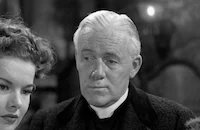
Charles D. Brown
Cliff Clark
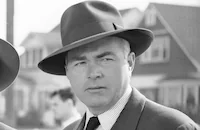
James Flavin
Russell Gleason
William Tannen
Mark Daniels
Bert Roach
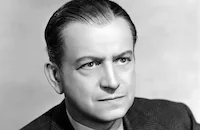
Russell Hicks
Charles Wagenheim
Robert Homans
Milton Parsons
Bill Lally
Eddy Chandler
Dick Midgley
Edward Hearn

Joe Yule
Art Belasco
George Magrill
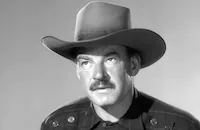
Ray Teal
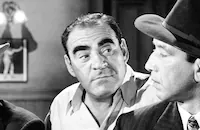
Ralph Dunn
Ernie Alexander
Jack Gardner

James Millican

Rand Brooks
Sam Ash

Roger Moore
Eddie Buzard
Bobby Callahan
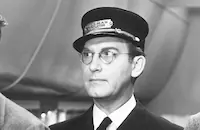
Emmett Vogan

Iris Adrian
George Ovey
Frank Marlowe
Lestor Dorr

Arthur O'connell

Wally Cassell
Cliff Danielson

Byron Foulger
Edna Holland
Mary Currier

Frances Rafferty
David Thirmar
Eddie Parker
Hooper Atchley
Edwin Stanley
George Carleton
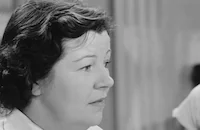
Margaret Bert
Leslie Denison

Lee Phelps
Jerry Maren
Jules Cowles
Ralph Brooks
Robert Bradford
Rudolph Germaine
Ruth Alder
John Ince
Crew
Lawrence P. Bachmann
George Boemler
Rose Caylor
Rose Caylor
William Ferrari
Cedric Gibbons
Bronislau Kaper
Charles Lawton
Dr. Charles Mandell
Douglas Shearer
Shoup
Bert Sperlin
Irving Starr
Harry Stradling
Edwin B. Willis

Videos
Movie Clip



Trailer
Film Details
Technical Specs

Articles
Fingers at the Window
Ayres, well cast as a doctor because of early medical training, volunteered for non-combatant duties during the war, working as a medic and distinguishing himself under fire. He later served as a chaplain's aide. Partly appeased, the public accepted him in films again after the end of the war. He claimed a few good roles and was nominated for a Best Actor Oscar for his role as a kindly doctor in Johnny Belinda (1948); but old resentments seemed to die hard, and much of his work until his death in 1996 was in minor film and TV productions.
Laraine Day, Ayres' leading lady (and a potential ax-murder victim) in Fingers at the Window, had also played his love interest, Nurse Mary Lamont, in the Dr. Kildare films. Because MGM was grooming her for bigger roles, she was written out of the series in Dr. Kildare's Wedding Day (1941) - a tragic one because the bride is killed off on the eve of the big event! Day later married baseball manager Leo Durocher and was known for a time as "the First Lady of Baseball."
Director: Charles Lederer
Producer: Irving Starr
Screenplay: Lawrence P. Bachmann, Rose Caylor
Art Direction: Cedric Gibbons, William Ferrari
Costume Design: Howard Shoup
Cinematography: Charles Lawton Jr., Harry Stradling Sr.
Editing: George Boemler
Original Music: Bronislau Kaper
Cast: Lew Ayres (Oliver Duffy), Laraine Day (Edwina Brown), Basil Rathbone (Cesar Ferrari, alias Dr. Santelle), Walter Kingsford (Dr. Cromwall), Miles Mander (Dr. Immelman), Charles D. Brown (Inspector Gallagher).
BW-81m.
by Roger Fristoe

Fingers at the Window
Quotes
Trivia
Notes
Fingers at the Window was screenwriter Charles Lederer's first film as a director and Lew Ayres's last released film for M-G-M. Shortly after the film's previews, Ayres declared himself a conscientious objector to war and, as a result, was confined to an internment camp. By mid-April 1942, he requested a change in status from conscientious objector to "non-combatant," and joined the Army Medical Corps. According to news items in Hollywood Reporter, M-G-M was concerned about adverse public reaction to Ayres's status and re-shot a "Dr. Kildare" film he had just completed, removing him entirely from the cast. According to one news item, by the time Fingers at the Window was released, the "panic" had lessened and the film opened without incident.
Most reviews appearing in connection with the film's New York City opening made little or no mention of Ayres' problems, although New York Herald Tribune said that it was "probably his last appearance on screen" and Kate Cameron wrote in her New York Daily News review of the film: "Lew's changed status, or the public's curiosity to take a good look at the actor who had the temerity to defy the public opinion and jeopardize his career on the screen for the sake of his principles, must account for the well-filled theatre that greeted Lew."
Ayres returned to the screen in the 1946 Universal film The Dark Mirror. For additional information on Ayres and the effect of his military status on other films, please consult the entries above for Calling Dr. Gillespie, The Dark Mirror and Dr. Kildare's Victory.















